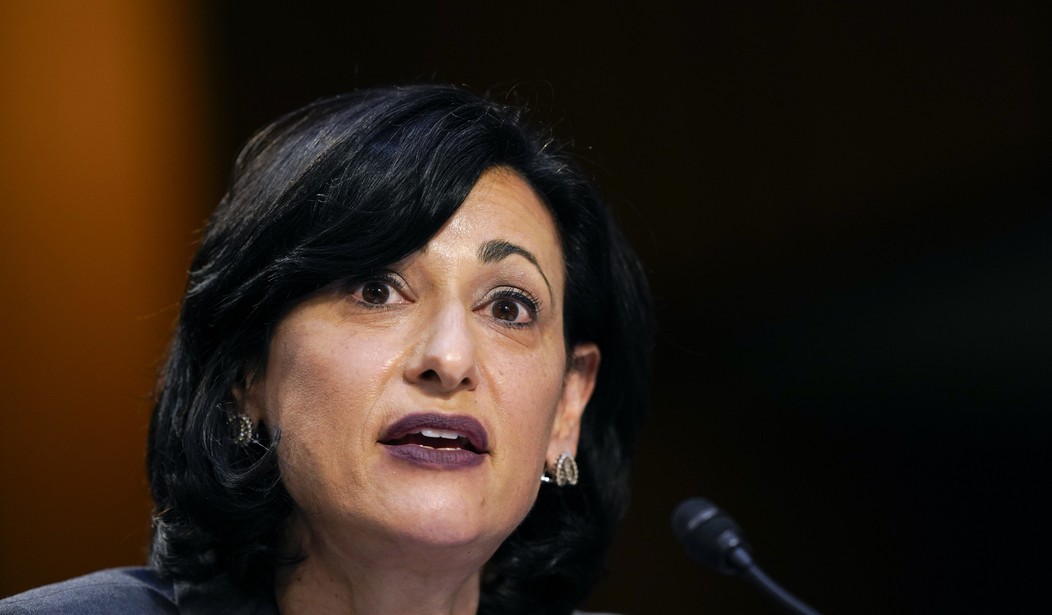"My promise is that CDC will continue to follow the science as our guide," Rochelle Walensky, director of the Centers for Disease Control and Prevention, told senators last week. While Walensky thinks the CDC already is doing that, her premise is contradicted by the agency's history of arbitrary, dubious and ever-changing advice about COVID-19.
Early in the pandemic, the CDC, together with the Food and Drug Administration, disastrously bungled the rollout of virus tests, making it impossible to curtail the spread of COVID-19 through contact tracing. Its obstruction of independently produced tests was coupled with irrationally narrow guidelines that initially recommended screening only for symptomatic travelers from China and people who had been in close contact with them.
The CDC, which at first dismissed the idea that Americans should wear face masks in public places to curtail the spread of the coronavirus, later decided such coverings were "the most important, powerful public health tool we have." It even insisted that people who had been vaccinated should continue wearing face masks in many indoor and outdoor settings, both public and private.
That advice went by the boards last week, when the CDC decided that fully vaccinated Americans generally do not need to wear masks, except when required to do so by businesses or the government. While Walensky suggested that shift was prompted by new data, the effectiveness of vaccines in preventing asymptomatic infection as well as serious disease and death had been clear for months.
At the end of March, an emotional Walensky warned that the country faced "impending doom" if states prematurely lifted COVID-19 restrictions. Although governors who favored reopening sooner rather than later paid her no heed, the disaster she predicted did not materialize, and last week she welcomed a vaccine-enabled "return to normal life."
Recommended
In April, the CDC published impractical, absurdly restrictive recommendations for summer camps, including a requirement that kids wear face masks during outdoor activities, which infectious disease experts slammed as "cruel," "irrational" and "unfairly draconian." During her Senate testimony last week, Walensky allowed that "our summer camp guidance is probably going to have to change," but only because vaccination of 12- to 15-year-olds is now underway.
Three days after the CDC issued its widely ridiculed camp guidelines, Walensky said "less than 10 percent of documented transmission(s), in many studies, have occurred outdoors." As critics such as New York Times columnist David Leonhardt and Reason science correspondent Ronald Bailey pointed out, that statement, which was widely echoed by the press, was true but highly misleading since it implied that outdoor transmission's share of infections is close to 10% -- a figure that may be off by two orders of magnitude.
The study that Walensky cited to back up her estimate, which she misrepresented in several significant ways, was inconsistent with the notion that outdoor transmission accounts for anything like 10% of infections. The actual number may be as low as 0.1 percent.
"I always considered the CDC to be the gold standard," Sen. Susan Collins, R-Maine, told Walensky at the Senate hearing. "I don't anymore."
Collins worried that the CDC's excessive conservatism "undermines public confidence in your recommendations," including "the recommendations that do make sense." Kavita Patel, health policy director during the Obama administration, expressed similar disappointment, telling CNBC "the CDC's credibility is eroding as quickly as our cases of coronavirus are eroding."
Sen. Chris Murphy, D-Conn., sprang to Walensky's defense. "I frankly appreciate the fact that we have leaders today who recognize that we still have gaps in information (and) who occasionally may err on the side of caution in order to save lives," he said.
Murphy assumes that "gaps in information" explain the CDC's reluctance to relax its recommendations, that the agency is actually saving lives, and that erring on the side of caution means disregarding the burdens imposed on Americans yearning for "normal life." The CDC's track record provides little reason to believe any of those propositions.
Jacob Sullum is a senior editor at Reason magazine. Follow him on Twitter: @jacobsullum.

























Join the conversation as a VIP Member